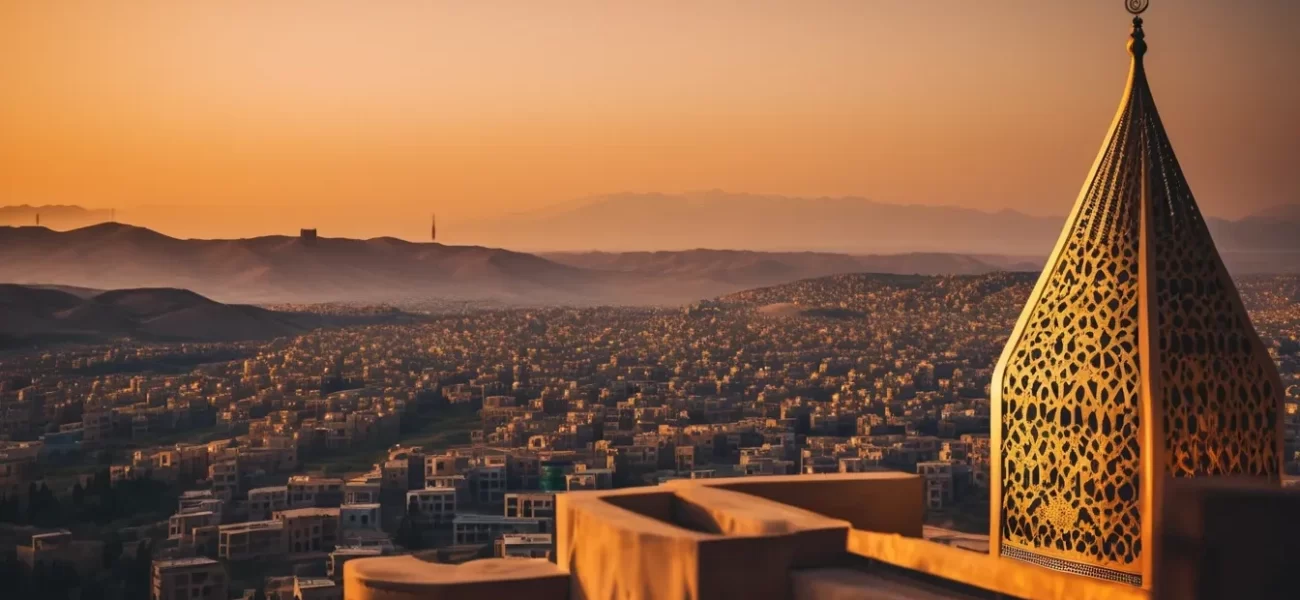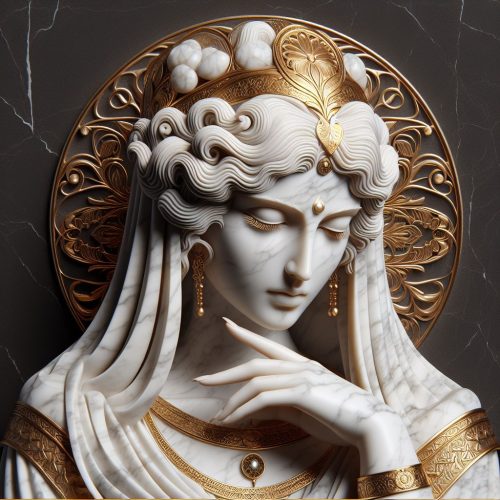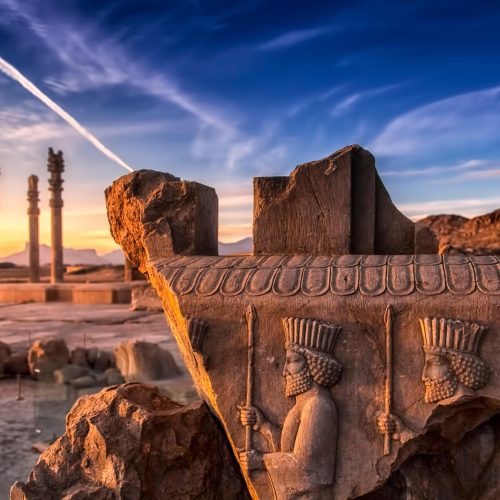By Dr. Parisa Rahimian Professor of Ancient Iranian Studies University of Tehran
On a crisp autumn morning in Aban month, as I walk through the courtyards of Tehran’s oldest houses, I can still hear the echoes of celebration from centuries past. The sound of water splashing in ancient fountains mingles with the laughter of children, and the scent of roses and wild herbs fills the air. Today, as I write about Jashan-e Abanegan, I am not merely documenting a festival—I am tracing the flowing rivers of our cultural memory, following droplets of tradition that have nourished Iranian civilization for millennia.
For over three decades, I have studied our ancient water ceremonies, but Abanegan holds a special place in my heart. This celebration, falling on the 10th day of Aban month in the Iranian calendar, represents far more than a simple water festival. It is a living testament to our ancestors’ profound understanding of water’s sacred nature, a celebration that has survived empire changes, religious transformations, and the relentless march of modernization.
Origins in the Mists of Time
I remember the first time I encountered mentions of Abanegan in ancient texts while researching at the National Library. The yellowed pages of medieval manuscripts spoke of a celebration older than written history itself. The festival honors Anahita, the ancient Iranian goddess of water, fertility, and wisdom, as well as the Aban yazata, the divine essence of water in Zoroastrian tradition. But its roots stretch even deeper, into the very bedrock of Iranian civilization.
In my early years as a scholar, I traveled to the ancient city of Isfahan to interview elderly residents who remembered the grand Abanegan celebrations of their youth. One grandmother, her face creased with the wisdom of years, told me how her own grandmother would gather the family before dawn on the day of Abanegan. “Water,” she said, “was never just water to us. It was life itself, flowing from the mountains, bringing green to our gardens, making the impossible possible in this land of deserts and peaks.”
The Sacred Geography of Water
As an Iranian historian, I have always been struck by how our ancestors mapped their world through waterways. The qanat systems—those ingenious underground aqueducts that made civilization possible in arid regions—were not merely engineering projects but sacred arteries carrying the blessing of Anahita herself. During Abanegan, these water channels became sites of celebration and reverence.
In my research expeditions to various regions of Iran, I’ve documented countless local variations of Abanegan celebrations. In the mountain villages of Mazandaran, people still gather by natural springs, reciting ancient prayers that blend Zoroastrian wisdom with Islamic devotion. In Yazd, the city of windcatchers, families traditionally visited their local ab anbar (water reservoir) to give thanks for the precious gift of water.
Rituals of Renewal
The heart of Abanegan beats with its rituals, each one carrying deep symbolic significance. As both a scholar and a participant in these celebrations, I’ve observed how these practices connect us to our ancestors while remaining vibrantly relevant to contemporary life.
The central ritual involves the sprinkling of water—not as mere play, but as a sacred act of purification and blessing. Women, traditionally the guardians of water ceremonies, would rise before dawn to collect water from springs or qanat outlets. This water, gathered in the pure light of morning, was believed to carry special barakat (blessing).
In my grandmother’s home in Shiraz, I remember watching her prepare for Abanegan by cleaning the courtyard fountain and filling it with rose petals. She would tell me, “Water remembers, my dear. Every drop carries the stories of where it has been.” This profound understanding of water as a living, conscious entity shaped how our ancestors interacted with their environment.
The Feminine Divine in Iranian Tradition
One cannot speak of Abanegan without acknowledging its deep connection to the feminine divine in Iranian culture. Anahita, often depicted as a beautiful maiden carrying a water pitcher, represents the perfect fusion of strength and nurturing care. In my studies of ancient Iranian iconography, I’ve traced how this imagery influenced everything from architectural motifs to literary metaphors.
The special role of women in Abanegan celebrations reflects this ancient association. In traditional ceremonies, women would gather to share stories of Anahita while preparing special foods associated with the festival. These gatherings, which I’ve had the privilege to document in various parts of Iran, serve as powerful spaces for the transmission of cultural knowledge and feminine wisdom.
Cultural Continuity and Change
As a historian, I am particularly fascinated by how Abanegan has adapted through centuries of cultural change while maintaining its essential character. The festival demonstrates the remarkable resilience of Iranian cultural traditions and their ability to absorb new influences while preserving their core meaning.
In the post-Islamic period, for instance, the celebration became associated with the story of Prophet Moses rescuing the daughters of Shuaib by the well. This seamless integration of Islamic narratives into the ancient framework of water reverence shows the sophisticated way Iranian culture has historically handled religious and cultural transitions.
Contemporary Celebrations
Today, as I observe modern Abanegan celebrations, I see both continuity and transformation. In urban areas, the festival has taken on new forms while retaining its essential spirit. Young environmental activists have begun incorporating Abanegan themes into their work, recognizing the festival’s powerful message about water conservation and environmental stewardship.
In my own neighborhood in Tehran, families still gather in parks and gardens for Abanegan, though perhaps with less ceremony than in past generations. Children splash water playfully, while elders share traditional sweets and tell stories about the importance of water in our heritage. The joy in their faces as they participate in these age-old customs gives me hope for the future of our cultural traditions.
Environmental Wisdom for Modern Times
As our world grapples with environmental challenges, particularly water scarcity, the wisdom embedded in Abanegan becomes increasingly relevant. Our ancestors understood something that modern science is only now confirming: the crucial importance of treating water not as a commodity but as a sacred trust.
In my recent work with environmental organizations, I’ve been struck by how traditional Iranian water management practices, celebrated during Abanegan, offer sustainable solutions to contemporary challenges. The festival’s emphasis on communal responsibility for water resources provides a model for modern conservation efforts.
A Personal Reflection
As I conclude this exploration of Abanegan, I find myself returning to a memory from my childhood in Kermanshah. I remember standing with my mother by an ancient spring, watching her carefully pour water over a small pot of sprouting herbs—a traditional Abanegan blessing for growth and renewal. “Water is life,” she told me, “and in celebrating water, we celebrate life itself.”
This simple truth lies at the heart of Jashan-e Abanegan. As an Iranian scholar who has spent a lifetime studying our cultural heritage, I am continuously amazed by how this ancient festival speaks to contemporary concerns. It reminds us that in Iranian culture, water has never been merely a resource to be exploited, but a sacred gift to be honored and protected.
As we face an uncertain environmental future, the messages of Abanegan become ever more crucial. The festival teaches us about sustainability, community responsibility, and the sacred nature of natural resources. It shows us how traditional wisdom can guide us toward more sustainable ways of living.
In my latest research project, I am documenting how young Iranians are reinterpreting Abanegan for their generation. I see them combining traditional practices with modern environmental awareness, creating new forms of celebration that honor both our heritage and our future.
Jashan-e Abanegan stands as a testament to the enduring wisdom of Iranian culture. It reminds us that our relationship with water is not merely practical but deeply spiritual and cultural. As both a scholar and an Iranian, I see in this ancient festival a bridge between past and future, tradition and innovation, the sacred and the everyday.
When I participate in Abanegan celebrations today, I feel connected to countless generations who have performed these same rituals, shared these same stories, and understood these same profound truths about our relationship with water. In our rapidly changing world, such connections to our cultural heritage become ever more precious.
As the autumn sun sets on another Abanegan celebration, I am filled with hope. Our ancient water wisdom, carried forward through this beautiful festival, offers vital lessons for creating a sustainable future. In celebrating Abanegan, we celebrate not just our past, but our continuing ability to adapt and thrive while holding true to the deepest values of our culture.
Abanegan reminds us that water is not just a natural resource—it is the flowing thread that connects us to our ancestors, to each other, and to the generations yet to come. As the sacred waters of Abanegan continue to flow through time, they carry with them the wisdom, hopes, and dreams of a civilization that has always understood the profound truth: that in honoring water, we honor life itself.




